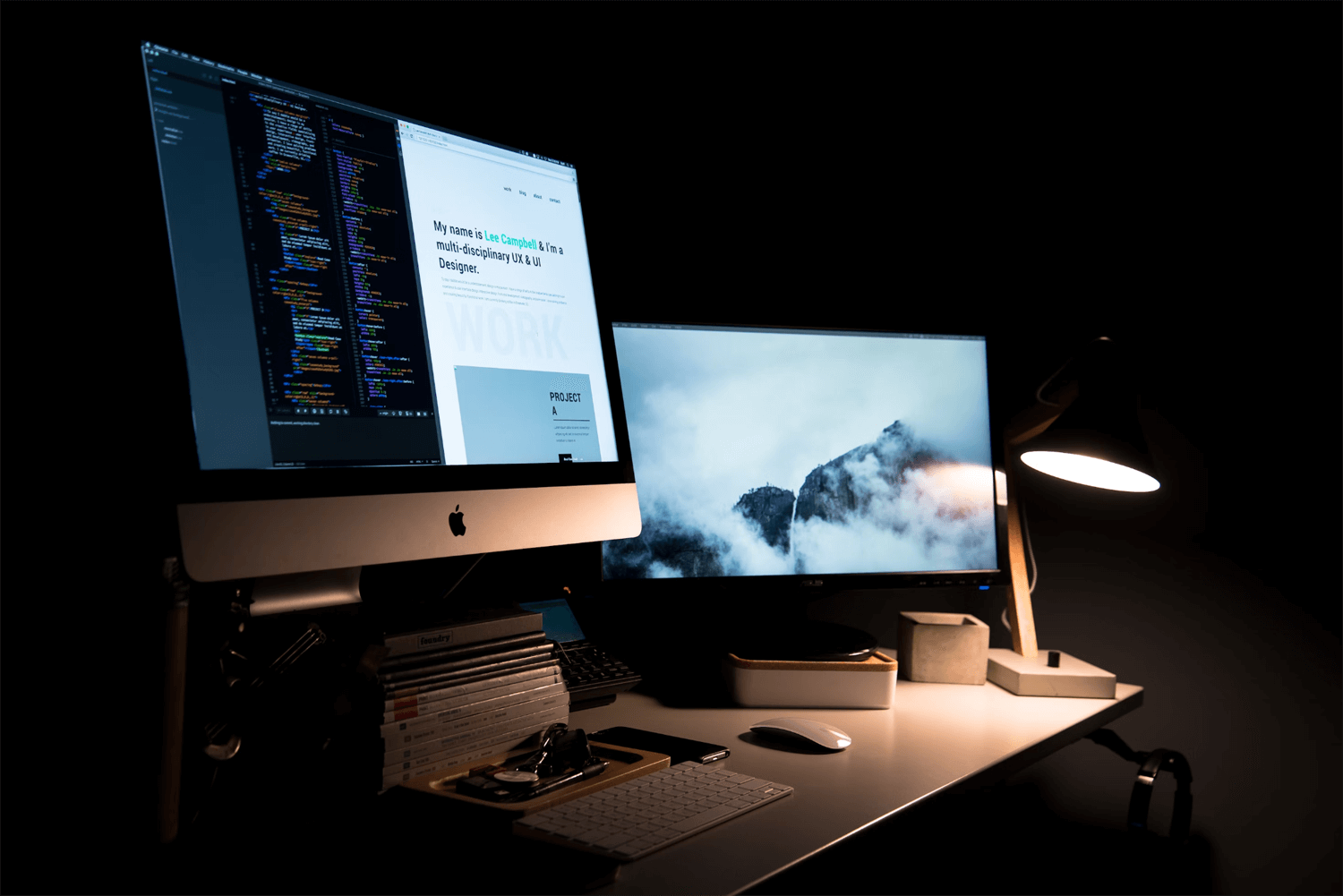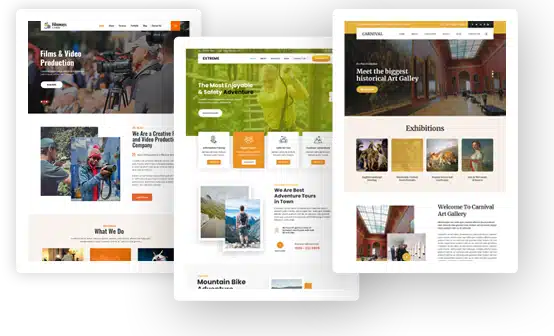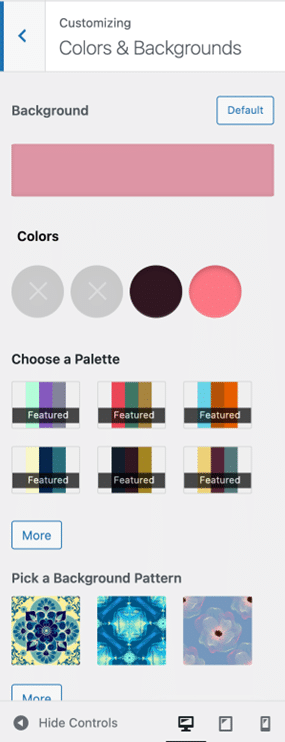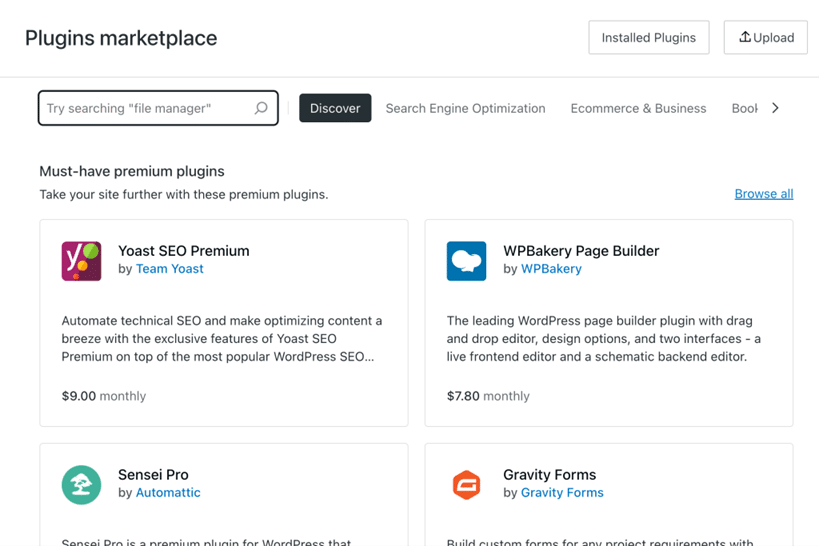10 Ways to Customize WordPress Themes for a Unique Website Design

Designing a website can be daunting, especially if you have no prior experience building one. Fortunately, WordPress offers several native themes that can be customized to create a site that effectively represents your brand.
This guide will discuss how to customize your WordPress theme to make it your own. Before we review the top customization options on WordPress, we will take a moment to discuss why you’d want to customize your WordPress theme.
Why Customize Your WordPress Theme?
Using a website admin theme is a great way to fast-track your design process. However, if you simply add your copy and a couple of images, the site won’t feel like your own. A generic site is unlikely to create a memorable experience.
By customizing your template, you can create a unique user experience for your brand. You can take all the liberties necessary to bring your brand to life by curating the visual side of its persona.
Since WordPress uses a WYSIWYG site editor, making changes in real time is easy. However, if you want to make more advanced changes to the original theme, you can use the CSS code editor to access the theme code and make those updates. Custom code edits are a bit more complicated, but they are certainly possible.
If you’re working with a parent theme or a third-party theme, remember that edits to the main files can be lost during updates—so consider using child themes or theme frameworks to preserve your changes.
10 Customizations to Make on Your WordPress Site
There are some customization options available for WordPress themes. Let’s check them out.
-
Brand Assets
The first customization you’ll want to make on your WordPress site theme is your brand assets. Swap out any generic logos and emblems in the template with your brand’s assets.
If you haven’t yet designed these elements, you should start there. How you build your brand identity will determine how you customize your other web design elements. The best approach is to invest in a designer who prioritizes strategy in their brand development process.
However, if you do not have the resources to hire a professional, you can use a site like Canva for basic logo design. There are numerous templates to use for inspiration, but, like your website, you’ll want to customize any template you use to ensure your logo is unique and easily distinguishable.
-
Typography
The next design component on your theme customization journey is typography. Typically, designers choose a set of complementary fonts, consisting of one serif and one sans-serif font. These fonts can be used in different styles and weights throughout your site. The fonts in your branded typography should align with those in your logo.
It’s also worth noting that it’s extremely important to focus on legibility when choosing fonts. Although decorative fonts may seem fun, they can negatively impact the user experience by making them hard to read. With the site editor, you can quickly preview and adjust typography choices across multiple pages to maintain consistency.
-
Color Scheme

Next, you’ll want to customize the color scheme of your website. Your brand identity should drive your color choices. They should represent your brand’s essence while also creating an appealing aesthetic.If you’re still building your brand identity, you can use featured color schemes for inspiration. Using these preset design themes will help you understand how to develop a consistent color scheme that can be carried throughout your entire website.
-
Copy
WordPress templates typically have Lorem Ipsum filler text. Naturally, you should replace this with copy that discusses your business. This is how you’ll speak to your audience. Your copy should reflect your brand’s voice and you can tailor this to resonate with your target audience.
This may seem like a no-brainer, but it’s crucial to call this out since some filler text blends in so well, and lines of gibberish are left in the final design. Ensure you comb through every inch of your website to avoid any embarrassing lines of out-of-place text.
-
Backgrounds
You should also edit the background color or images of your web pages in the theme editor. This helps create visual differentiation between sections and adds depth to your pages.
Many WordPress templates use stock images as the default background, so swapping those out for branded images is nice. Some businesses even use B-roll footage that showcases their brand, whether it’s from an event they participated in or on a job site.
-
Page Layout
Typically, WordPress templates come with page layouts designed to provide a pleasant viewing experience. However, sometimes, these layouts can feel rigid or restrictive. Fortunately, the block-based site editor offers a variety of layout options that make it easy to change the flow of a page without much heavy lifting.
As you customize your page layouts, prioritize dynamic elements that look good on all devices. A strong responsive design ensures your site adapts well to smartphones and tablets, which is now essential for both user experience and SEO. This focus on manual layout design pairs well with SEO automation tools that can monitor your site’s ongoing technical health.
-
Navigation Menu
Another customization you can make on your WordPress site is your navigation menu. Most templates have intuitive navigation designs, but there’s room for improvement sometimes.
As you customize your menu, prioritize the user experience. Ensure that site visitors can easily find any information they need. Like your general page layout, your navigation menu should also be accessible for users on mobile phones. he site editor lets you rearrange, rename, and group items so navigation feels natural.
-
Footer
The footer is also valuable real estate to customize. Many businesses use the footer to link to essential pages on their site map, creating an additional menu.
Depending on your organization’s nature, you can also add sponsors’ logos, compliance certifications, awards, and other designations. These designations can add a lovely touch.
-
Calls to Action (CTAs)
Many WordPress themes include buttons throughout the pages that can be used to add calls to action. These elements are essential for guiding the site visitors in the direction you’d like them to take and for expanding your potential sales list.
How you structure your CTAs depends on the type of business you have and the type of conversion that you’re aiming for. For example, a service provider can use CTAs to encourage visitors to book a call to learn about their offer. An e-commerce site can use CTAs to shop a new collection or product.
Similarly, if a contact form is an element of your active theme, you should customize this to gather the information you’re looking for. You should also ensure it’s appropriately configured with your CRM or whatever pipeline you use to manage leads.
-
Metadata
Although it’s more on the backend than the design side, it’s also important to customize your site metadata, especially your meta titles.
This is very helpful for SEO, but it also ensures that visible real estate, such as the tab you open in the browser, is customized accordingly. It makes the difference between the tab saying the actual name of your page instead of “Page 1” or another filler name.
Tips for Great WordPress Web Designs
Now that you have a better idea of all the customizations you can make on a WordPress template, it’s time to get to work. Here are a few essential tips to keep in mind as you design your website.
-
Keep it Consistent
Creating a consistent brand experience across your website is important for developing an easily recognizable brand. The beauty of a WordPress template is that it sets the foundation of a consistent experience and aesthetic across your site.
However, as you customize the elements in the theme editor, it’s essential to make them part of the parent theme instead of making different customizations on each page. If every page had a different color scheme and featured different fonts, the website wouldn’t have a responsive design. That said, it would create a chaotic user experience.
Of course, you can use different layouts from page to page, depending on each one’s purpose. However, they should all maintain a similar flow.
-
Keep it Simple
It may be tempting to cram as much information and imagery into your site as possible, but this is not usually the best approach. A busy design with large blocks of text makes it really easy to lose sight of the purpose of your website.
With that in mind, you’ll want to keep it simple so that users can easily find and focus on the information you’re trying to convey. Add skimmable blocks of text with informative headings and appropriate CTAs.
It’s also wise to keep your color choices simple. Using too many random colors can make your site look busy and detract from the cohesive brand persona you’re trying to establish.

Abacus Global is a great example of a simple website that conveys a bold, professional brand persona. This brand uses a black and white foundation on its website, with blocks of green and gold accents to make it more visually appealing.The site makes excellent use of company photos featuring real team members to add a more personal touch.
-
Leverage Plugins
Another perk of designing a WordPress site is that hundreds of plugins are available to customize your site. Whether you’re looking for a tool to enhance your SEO efforts or you want to add a scheduling widget, there are plenty of free and paid options to help you out.
If you encounter a roadblock with your design or want to add additional functionality, visit the WordPress plugin marketplace to explore available options for assistance.
Many of these plugins also integrate seamlessly with theme frameworks, making it easier to extend your site’s functionality. If you’re working from a parent theme or third-party theme, check that the plugins you install won’t conflict with your existing structure. With the right version control practices in place, you can test plugins without worrying about breaking your site’s design.

It’s worth noting that you must have a business plan on WordPress to access plugins. Many of these plugins also integrate seamlessly with theme frameworks, making it easier to extend your site’s functionality while keeping your responsive design intact.
Final Thoughts
WordPress themes are an excellent resource for building your business’s site. Since these themes are very customizable, it’s possible to create a unique user experience that perfectly represents your brand.
By leveraging the site editor for day-to-day updates, and using plugins, frameworks, and custom code for advanced changes, you can achieve both flexibility and control.
Are you ready to transform your WordPress template into a fully branded website? Head to our WordPress theme page to find the design that fits your needs.




